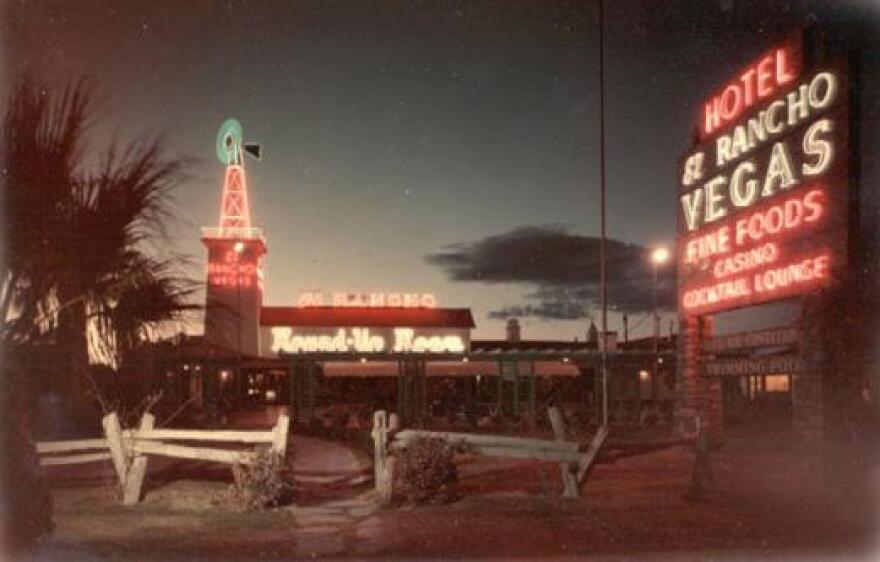We couldn’t say goodbye to 2016 without mentioning that it marked the 75th anniversary of the Las Vegas Strip. Well, the road WAS there already, dotted with some small clubs and restaurants. But on April 3, 1941, the Strip began with the El Rancho Vegas at the southwest corner of Highway 91 and San Francisco—today, the Strip and Sahara.
Thomas Hull built it. He was a successful California businessman, with El Rancho motor hotels around the state. He decided to build something similar here. Big Jim Cashman helped talk him into it. He and others suggested including a casino. Hull decided on a location just outside the city limits to avoid too many fees and regulations. The rest really is history. It included fewer than 100 rooms at first but grew to about 220 eventually. The swimming pool was close to the highway to attract hot travelers. Architect Wayne McAllister gave the El Rancho Vegas a Spanish-style exterior and western-style interior.
That design would prove significant. In the 1930s and 1940s, Las Vegas marketed itself as a frontier town, from the Elks Helldorado to downtown properties like the Apache, Frontier, Pioneer, El Cortez, and Golden Nugget. The El Rancho Vegas got into the act with its Opera House showroom and later the chuck wagon buffet, the brainchild of marketing and publicity director Herb McDonald.
Some important figures in Las Vegas entertainment would be part of the El Rancho Vegas. They included old vaudevillians and nightclub performers like Joe E. Lewis, known for saying, “Post Time!” and Sophie Tucker, the last of the red hot mamas. Exotic dancer Lili St. Cyr’s act troubled District Attorney Roger D. Foley enough for him to prosecute her for lewd conduct. The hotel would be the site of one of the great movie industry weddings: Paul Newman and Joanne Woodward. Another couple, Betty Grable and Harry James, entertained and lived there. Maxine Lewis, a onetime performer, served as entertainment director—one of the first and few women in powerful jobs on the Strip.
The El Rancho Vegas went through some significant hands, or almost did. Benjamin Siegel tried to buy it from Hull. Not only did Hull turn him down, but he said the people of Las Vegas had been too good for him to sell his property to the likes of Siegel. Instead, Billy Wilkerson operated it for a while—he was involved in building the Flamingo as Siegel’s partner, or front man, or idea man, or victim; the history isn’t entirely clear. Another operator who had arrived from southern California, Wilbur Clark, ran it for a while before moving on to plan his Desert Inn. Front man Sanford Adler and Charlie Resnik of Detroit’s Purple Gang also had a hand in things.
But in 1947, Beldon Katleman took over. He changed the design to French Provincial and expanded the casino. He hoped to compete with newer, bigger properties like the Flamingo. But it all ended on June 17, 1960, when an early morning fire destroyed the El Rancho Vegas. It may have been a wiring issue. There were rumors that a mobster resented being ejected from the premises and got revenge. It never reopened, and the site remains empty. But when it comes to historical memories, the El Rancho Vegas is still with us.








